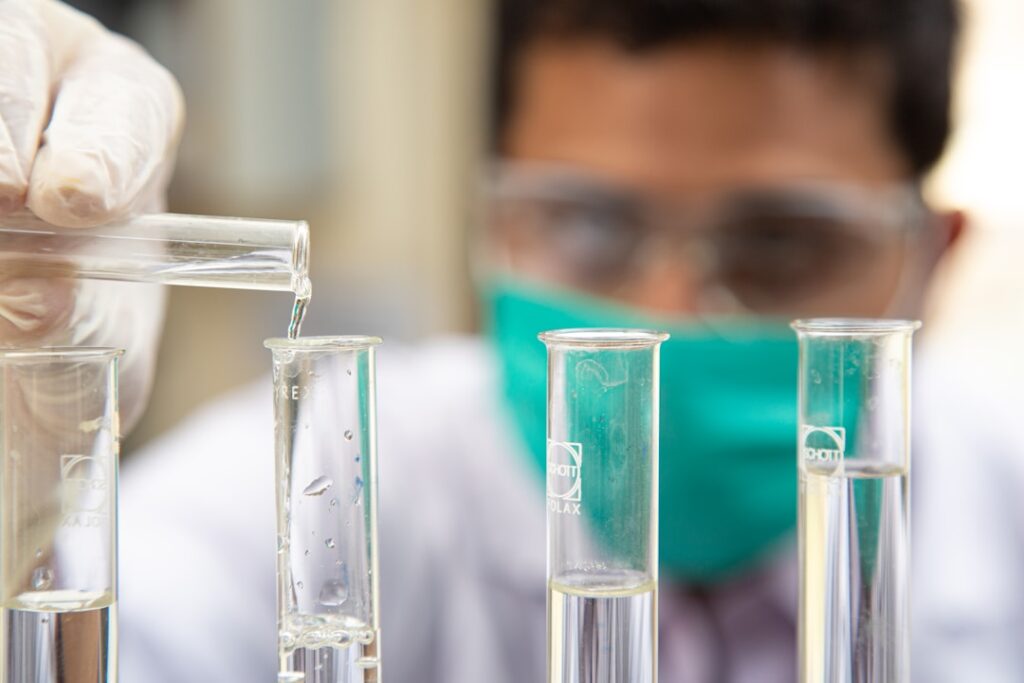Using Peptides and Research Chemicals in Your Lab
Peptides and research chemicals are pivotal in the world of laboratory research, offering vast opportunities in the realm of science and medicine. Understanding their properties, functions, and applications is essential for any scientific endeavor or study. Laboratories across various disciplines leverage these substances to push the boundaries of knowledge and develop new treatments. Below, we delve into the significance of these compounds in modern research, unpack their use, and address key aspects of their management in a lab setting.
Understanding the Basics of Peptides in Laboratory Research

Peptides are short chains of amino acids, generally comprising 50 amino acids or less, that are instrumental in a variety of biological processes. Unlike proteins, peptides are smaller in size, which allows researchers to use them in ways that proteins cannot be used, including as hormones, neurotransmitters, and growth factors. Their diverse range of functions makes them a versatile tool in both basic research and the development of new therapeutics.
In the laboratory, peptides can be synthesized using automated machines that join amino acids in a specific sequence, or they can be extracted from natural sources. Precision in the synthesis of peptides is crucial, as even a small discrepancy can significantly alter their function. Understanding the structure and function relationship in peptides is a central theme in biochemical research.
Applications for laboratory-made peptides include studying enzyme function, creating antibodies for disease detection, and designing novel drugs. For example, researchers might create a peptide to mimic a disease-associated protein and then use that peptide to develop an immune response in animal models. This process highlights the therapeutic potential of peptides in vaccine and drug development.
Peptides can be delicate, and hence their stability under laboratory conditions is a matter of great importance. Researchers must understand the factors that cause degradation, such as temperature, pH levels, and enzymes, to ensure they achieve the desired outcomes. Learn about peptides and research chemicals to gain insight into their stability and storage requirements.
Exploring the Variety of Research Chemicals and Their Applications
Research chemicals are substances used by scientists for medical and scientific research purposes. They are not intended for human or veterinary use, which distinguishes them from drugs that are optimized for safety and efficacy in living beings. Research chemicals come in many forms, including liquids, powders, and crystals, and they encompass a wide range of chemical classes, such as cannabinoids, psychedelics, and stimulants.
The primary purpose of these chemicals is to enable researchers to explore the pharmacological properties and therapeutic potential of new compounds. These studies often serve as a preliminary step to clinical trials and can lead to the discovery of compounds with significant medicinal value. With the help of research chemicals, scientists can map out the effects of new substances on biological systems and ascertain their safety profiles.
For instance, in neuroscience research, chemicals that affect brain function can be employed to understand the underpinnings of neurological disorders. Similarly, in the field of oncology, new chemicals can be utilized to test their efficacy against cancer cells in vitro, which may lead to the development of new chemotherapy agents. The opportunities and avenues in research that these chemicals provide are crucial for scientific advancement.
Best Practices for Storage and Handling of Peptides and Research Chemicals

Proper storage and handling are critical to maintaining the integrity and longevity of peptides and research chemicals. Mismanagement can lead to degradation, contamination, or even dangerous reactions. It’s important to follow strict best practices in the lab to ensure that these substances retain their desired properties for as long as necessary.
Peptides, for instance, often require storage at very low temperatures to prevent degradation by heat and moisture. As such, many are kept in a lyophilized form in a freezer, with specific temperature requirements varying based on the peptide’s composition. It’s vital to avoid repeated freeze-thaw cycles, which can degrade the peptides. Instead, aliquoting the peptides into single-use portions is recommended.
For research chemicals, documentation and labeling are essential. Each container should provide clear identification, including the substance’s name, chemical structure, storage requirements, and handling precautions. Safety data sheets should always be accessible, and adherence to personal protective equipment (PPE) guidelines is non-negotiable. Chemicals require proper ventilation during use, and some may need to be handled inside a fume hood to avoid inhalation risks.
Altogether, peptides and research chemicals are integral to scientific progress across numerous fields. Their proper use, handling, and ethical considerations form a bedrock of responsible scientific inquiry. Advances continue to shape the potential of these substances, indicating an exciting and promising future for laboratory research and the many applications that will arise from it.




